Dive into the wonderful world of Japanese citrus varieties, where a mouthwatering mix of flavors awaits.
Get ready to tickle your taste buds with the fragrant yuzu, the tangy sudachi, and the perfectly balanced kabosu.
These citrus fruits don’t just add a pop of flavor to your meals; they also come with a rich history and a bunch of health benefits.
Get ready to delve into the essence and applications of these exquisite fruits that will revolutionize your culinary adventures.
Brace yourself for a citrus-infused exploration like no other!
Yuzu: Japan’s Fragrant Treasure
Yuzu, a fragrant citrus fruit native to Japan, captivates chefs and food enthusiasts worldwide with its unique flavor profile. You’re probably wondering what sets yuzu apart from other citrus fruits.
It’s the unparalleled balance of tartness and floral notes, a combination that’s hard to find in any other fruit. This makes it a secret weapon in your culinary arsenal, allowing you to elevate dishes with a single ingredient.
To harness yuzu’s full potential, you don’t need to overcomplicate things. Start by incorporating its zest and juice into dressings, marinades, or even cocktails.
Imagine brightening up a simple vinaigrette or adding a twist to your favorite gin and tonic. With yuzu, you’re in control, transforming the ordinary into extraordinary.
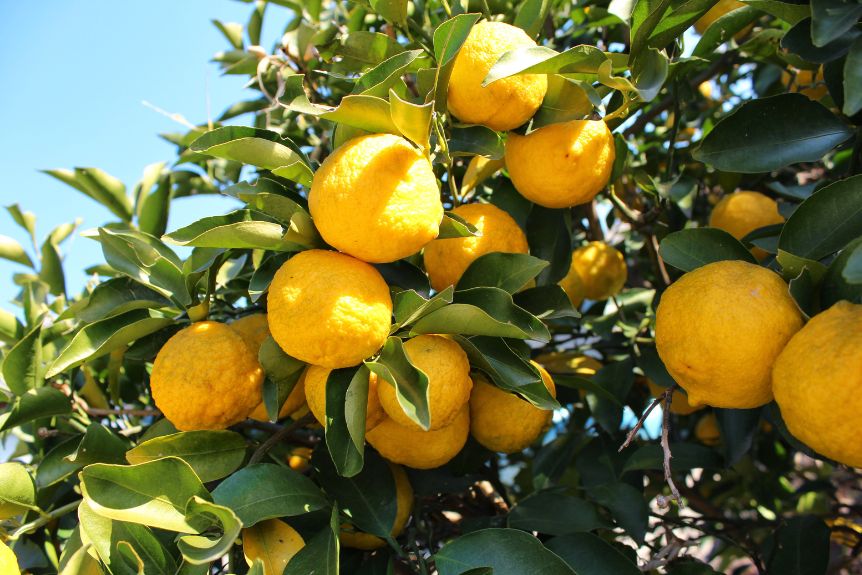

Sudachi: The Subtle Zest
While yuzu might capture hearts with its fragrant profile, sudachi offers a more subtle zest that’s equally captivating in its own right. You’ll find that this small, green citrus fruit punches above its weight in the flavor department, delivering a unique tang that’s less pronounced than yuzu but just as essential in Japanese cuisine.
Sudachi’s charm lies in its ability to enhance dishes without overshadowing other ingredients, giving you control over the flavor balance.
Incorporating sudachi into your culinary experiments allows you to add a touch of acidity that’s nuanced and refined. It’s particularly popular as a finishing touch on grilled fish, soups, and noodles, where its zest brightens the dish without dominating it.
This control over the flavor profile makes sudachi an invaluable tool in your kitchen, enabling you to fine-tune dishes to perfection.
Embrace sudachi’s subtle zest as a way to elevate your cooking. By mastering its use, you unlock a new dimension of flavor that complements rather than competes, ensuring that every meal you prepare is a harmonious blend of taste and aroma.
Sudachi isn’t just an ingredient; it’s your ally in achieving culinary excellence.
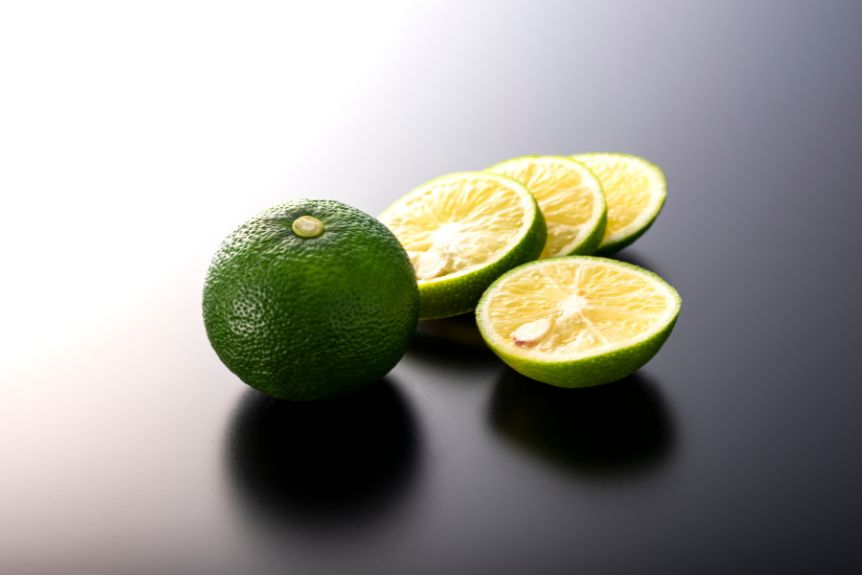

Kabosu: Sweet and Sour Delight
Exploring the world of Japanese citrus, you’ll find kabosu, a fruit that masterfully balances sweet and sour notes to enhance a myriad of dishes.
This unique citrus variety, often overshadowed by its more famous counterparts, deserves your attention for its culinary versatility. Originating from Oita Prefecture, kabosu offers a refreshing twist wherever you decide to use it.
You’ll appreciate kabosu’s ability to elevate flavors in both savory and sweet dishes. Its juice adds a subtle complexity that can’t be replicated with other citrus fruits.
Imagine squeezing a few drops over grilled fish or incorporating it into a sophisticated dessert sauce. The result? You’ll discover layers of flavor that were previously unattainable.
Moreover, kabosu’s zest can be a game-changer in your seasoning arsenal. It has the power to brighten up salad dressings, marinades, and even cocktails, giving you control over the nuanced balance of your dishes.
This adaptability makes kabosu an indispensable ingredient in your kitchen.
Embrace kabosu to revolutionize your culinary creations. Its sweet and sour delight isn’t just a taste sensation; it’s an opportunity to refine your dishes with precision, asserting your mastery over the complex world of flavors.
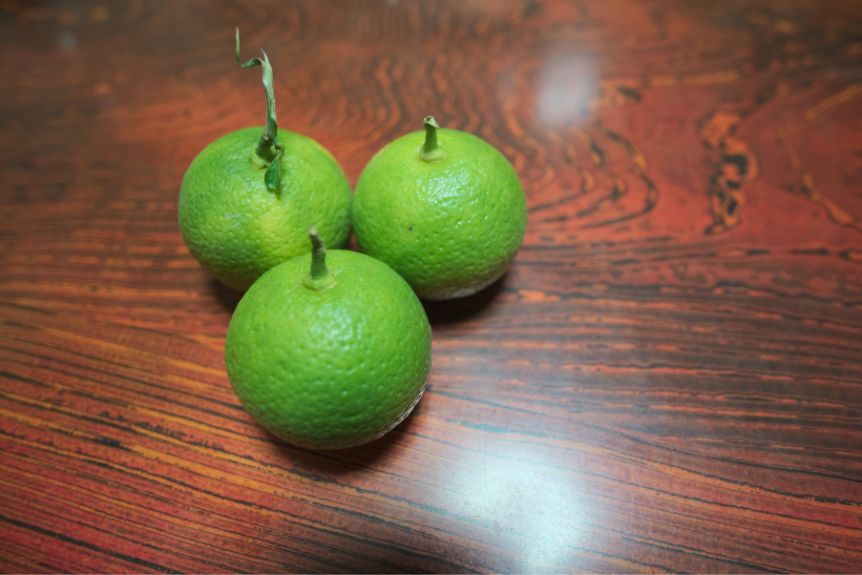

Lesser-Known Japanese Citrus Varieties
After discovering the unique charm of kabosu, it’s time to uncover the world of lesser-known Japanese citrus varieties that await your culinary exploration. These hidden gems offer a spectrum of flavors that can elevate your dishes and give you the edge in any culinary endeavor.
First, meet the shikuwasa, a tiny powerhouse of tartness, perfect for adding a punch to cocktails or a zesty twist to desserts. You’re in control here; a little goes a long way in transforming a dish from mundane to extraordinary.
Next, there’s the amanatsu, a rare find with a sweet yet slightly bitter taste. Incorporating amanatsu into your cooking not only adds a unique flavor but also shows off your prowess in utilizing exclusive ingredients.
Lastly, don’t overlook the daidai. It’s often used in traditional Japanese New Year dishes for its symbolic representation of longevity and prosperity. Its bitter taste might challenge your culinary skills, but mastering it allows you to create dishes that aren’t only flavorful but also rich in cultural significance.
Embrace these lesser-known citrus fruits to distinguish your cuisine. With each addition, you’re not just cooking; you’re curating an experience that’s uniquely yours.
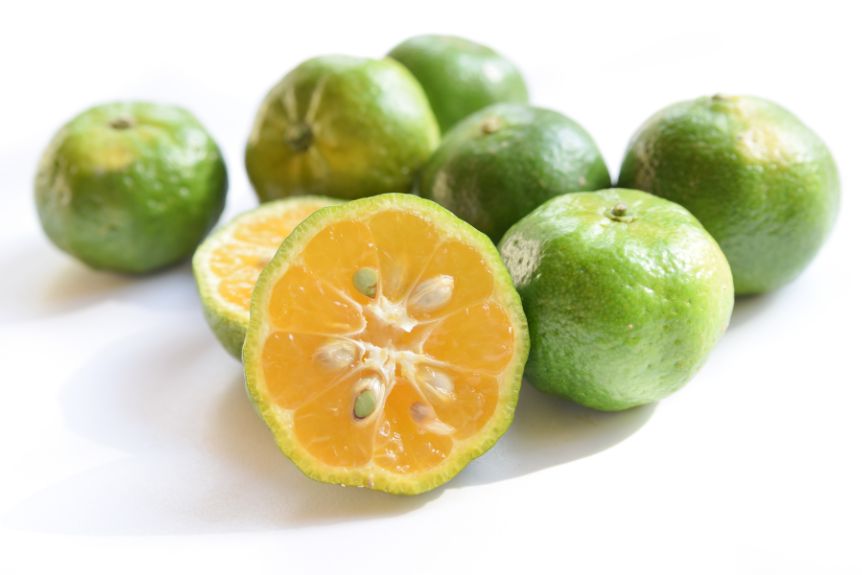

Culinary Uses and Benefits
Diving into the culinary uses and benefits of these Japanese citrus varieties can unlock a treasure trove of flavors and health perks for your cooking.
By incorporating yuzu, sudachi, kabosu, and more into your dishes, you’re not just adding a zest of flavor; you’re infusing your meals with antioxidants and vitamin C, boosting your immune system.
You’ve got the power to transform ordinary recipes into extraordinary culinary experiences. Imagine drizzling yuzu juice over grilled fish, enhancing its flavor while also reaping the benefits of its anti-inflammatory properties.
Or, consider squeezing sudachi over a warm bowl of ramen to elevate its taste and add a vitamin-rich twist.
Don’t limit yourself to just the juice; the zest of these citrus fruits can also be a game-changer in your kitchen. Use kabosu zest to create a vibrant, flavor-packed rub for meats, or incorporate it into desserts for a refreshing twist.
This not only adds a burst of flavor but also provides dietary fiber, contributing to a healthier digestive system.
It’s in your hands to master the art of using these Japanese citrus varieties. By doing so, you’ll not only enhance your dishes’ flavors but also embrace a healthier lifestyle through their numerous benefits.
Conclusion
You’ve now explored the vibrant world of Japanese citrus varieties, from the aromatic yuzu to the zesty sudachi and the balanced kabosu. Beyond these, there are even more varieties waiting to zest up your culinary adventures.
Each fruit offers unique flavors and benefits, perfect for adding a touch of Japan to your dishes.
While many people rave about the delightful taste and versatility of Japanese citrus, there may be some who’ve a different opinion. We’d love to hear your thoughts!
Do you have a favorite Japanese citrus variety, or perhaps a different citrus fruit that you prefer? Leave a comment below and let’s know!
Your input will help us continue to explore the diverse world of citrus and discover new flavors together. So, why not experiment with these citrus wonders? They’re sure to brighten your meals and tantalize your taste buds with their distinct, refreshing qualities.


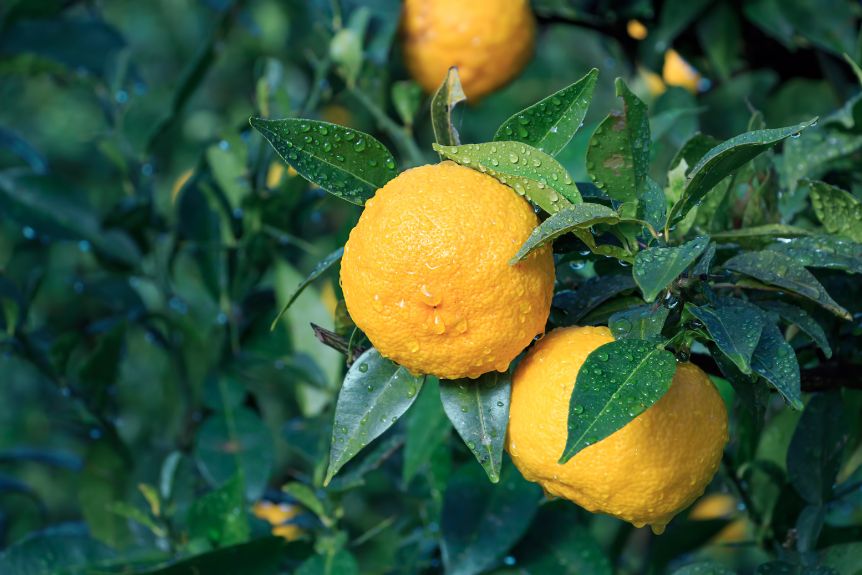


Konnichiwa! (Hello!) I'm Pat Tokuyama, a Japanese tofu cookbook author, who travels for music, food, and adventure. If you like Japanese tea, checkout some of the newestorganic japanese tea, matcha bowls and noren and more!
** Curious about the Plant Based Japanese Cooking Club? ** Learn more here!